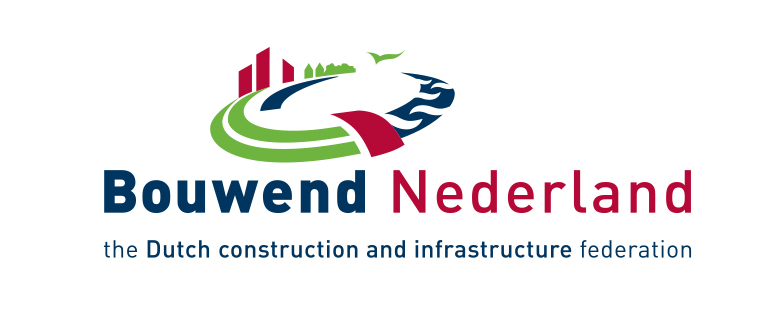Overall construction activity
In comparison with other sectors, the previous economic crises lasted longer in the construction industry. A short-term recovery took place in 2014 and 2015, when the first EU budget period came to an end and buildings financed from these funds were completed. Only 2017 saw a return to the trend of gradual growth, which accelerated in 2018 and continued in 2019. In 2020, despite favorable forecasts, construction output fell. Initially, the production was not significantly affected by the pandemic, but at a later stage labour shortages, stagnating demand and administrative unpreparedness of authorities began to manifest themselves. However, filled order books and the number of building permits give hope for a turnaround. A long-term prediction is, however, very uncertain, as there exists a high number of risks such as new coronavirus outbreaks and related consequences.
The latter may be the result of economic fluctuations and its manifestation in constraints on public finances and the need to reduce public investments. Another important factor is the unsatisfying quality of construction legislation, which is currently undergoing a demanding process of recodification. This has a negative impact on investment plans, both in the private and especially in the public sector. In the latter, this affects notably transport infrastructure. One of the highest risks is the lack of labour due to the decline in workforce.
Housebuilding
The development in housing construction - in number of completed and started dwellings – reflects to a large extent the development of the construction industry as a whole.
In 2019, the number of completed dwellings amounted to 36,000 but in 2020 growth came to a halt due to the COVID-19 pandemic.
Due to the age of buildings, the demographic and social composition of the population and an increasing demand for quality housing, the average annual demand of new flats amounts to around 37,000. This was only achieved in the period from 2007 to 2010 but there are signs of an increasing pace.
Reconstruction, modernisation, repairs and maintenance of dwellings also form a significant share of production in this segment. The number of new dwellings in non-residential buildings has shown a growing trend in recent years.
Ongoing attention is being paid to increasing the energy efficiency of apartments. For newly completed dwellings, the proportion of those that meet category “A” (extremely economical) and category “B” (very economical) is increasing. Also, the additional insulation of older buildings, especially from the period of panel construction, is continuing intensely. Increasing attention is being paid to the construction of passive houses.
GDP 2020
BILLION
POPULATION 2020
Total investment in construction in 2020
BILLION
Non-residential construction
Construction of non-residential buildings has been stagnating until 2017, with even declining trends in some categories. The return to growth started in 2018 when the number of completed buildings grew by 50% in all categories. In line with this development, the total area of completed buildings and their investment costs were also growing. Above all, this concerned administrative buildings and big shopping malls. Construction of buildings for civic facilities - primarily schools, university campuses, healthcare buildings, sports and cultural objects, including repairs, maintenance and energy efficiency improvements - was also growing continuously. This trend not only concerns large urban areas but also applies to more peripherical regions.
The economic slowdown in 2020 also affected the reconstruction and extension of industrial buildings and storage facilities as well as new areas including a complete infrastructural network. A great deal of attention is also being paid to the completion of buildings and facilities that ensure compliance with increased environmental protection requirements.
Civil engineering
From 2016 to 2017, civil engineering recorded a significant decrease in the volume of performed works because the public sector - i.e. the main contracting authority in civil engineering – reduced its orders significantly from the usual share of 45 to 50% of all orders to only 32% in 2017.
In 2018, the situation improved and a positive development was observed in 2019. However, in 2020, problems still persist due to the COVID-19 crisis and are most noticeable in transport infrastructure, in particular in motorway infrastructure. This is due to the purchase of land and interference from citizen’s initiatives. Both are the result of imperfect legislation. The Building Act is still in the approval process. Its adoption should bring a significant improvement. The situation is better in the construction and modernisation of railway infrastructure, where works are carried out on the investor´s own land.
Improvements have been made in technical refurbishments and repairs of lower class roads, including bridges, to which more funds have been allocated. For the coming years, enhanced investors´ training is creating a prerequisite for better budgeting, including the use of European funds. However the issue of modernising of both the long-distance and local power lines, water distribution networks, sewage and gas networks remains unsolved.
| Per cent variation of investment in real terms on previous year | |||||||
| investment Mln. € fixed prices | |||||||
| Sectors | 2020a | 2017 | 2018 | 2019 | 2020a | 2021b | |
| 1. | Building | 11,764 | 7.4 | 10.3 | 2.6 | N/A | N/A |
| 1.1. Housebuilding | 4,302 | -9.9 | 10.7 | 21.2 | N/A | N/A | |
| 1.1.1. New | 2,308 | -1.7 | -10.1 | 14.8 | N/A | N/A | |
| 1.1.2. Renovation | 1,995 | -39.5 | 98.2 | 29.4 | N/A | N/A | |
| 1.2. Non residential (c) | 7,461 | 19.0 | 8.6 | -5.8 | N/A | N/A | |
| 1.2.1. Private | 5,312 | 21.0 | 26.0 | -9.7 | N/A | N/A | |
| 1.2.2. Public | 2,149 | 11.2 | -19.4v | 5.4 | N/A | N/A | |
| 2. | Civil Engineering | 7,222 | 1.2 | 1.7 | 4.4 | N/A | N/A |
| (1 + 2) | Total Construction | 18,986 | 4.9 | 6.9 | 3.2 | -10.1 | 1.0 |
| a: estimate - b: forecast - c: incl. R&M | |||||||
| Number of building permits in residential construction | |||||||
| 2017 | 2018 | 2019 | 2020a | 2021b | |||
| single dwelling | 18,678 | 19,186 | 19,947 | 19,814 | 19,000 | ||
| collective dwelling | 7,244 | 7,280 | 12,491 | 9,875 | 10,000 | ||
| other types of dwelling | 5,599 | 6,655 | 6,239 | 6,094 | 6,000 | ||
| Total | 31,521 | 33,121 | 38,677 | 35,805 | 35,000 | ||
| (Collective dwellings and other types of buildings: in number of flats) | |||||||



































